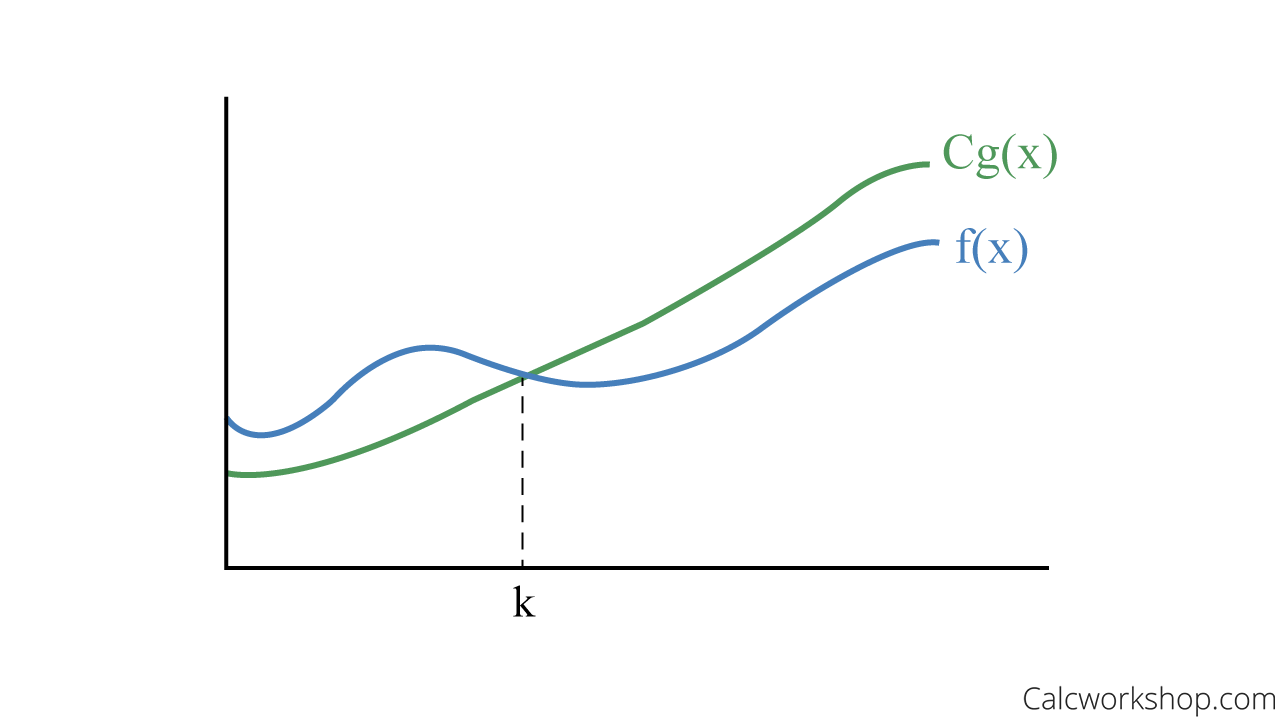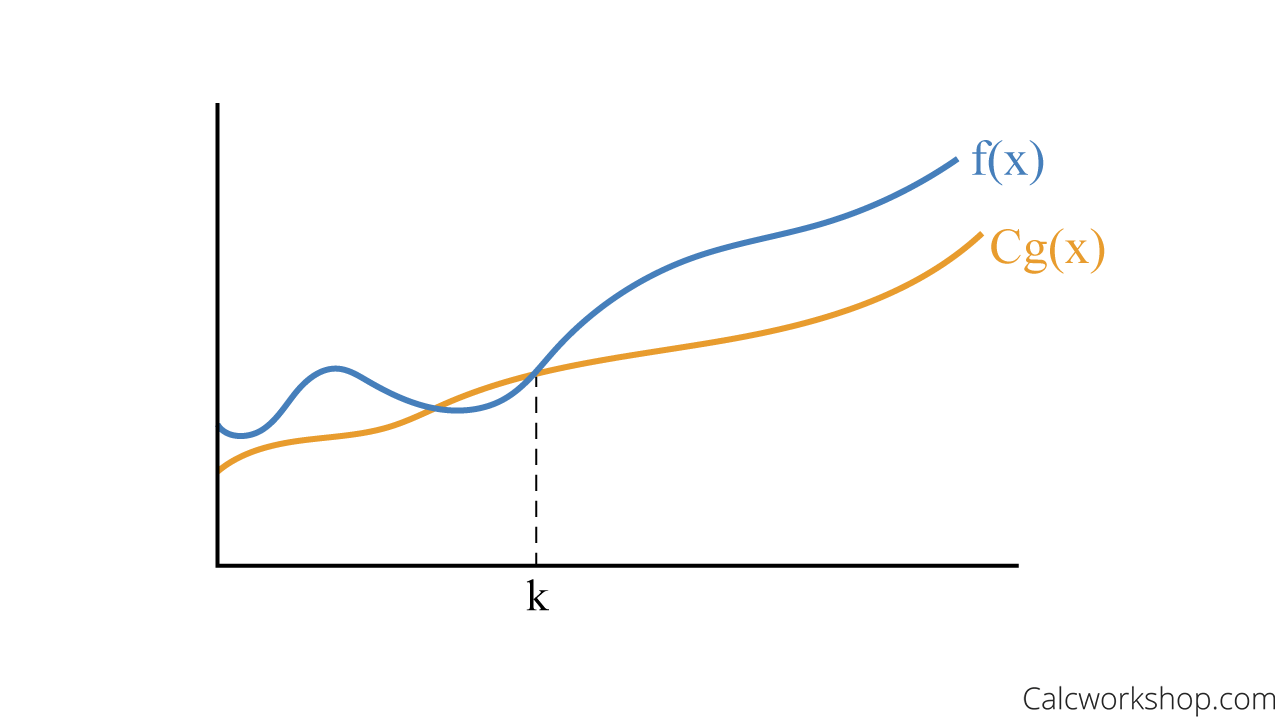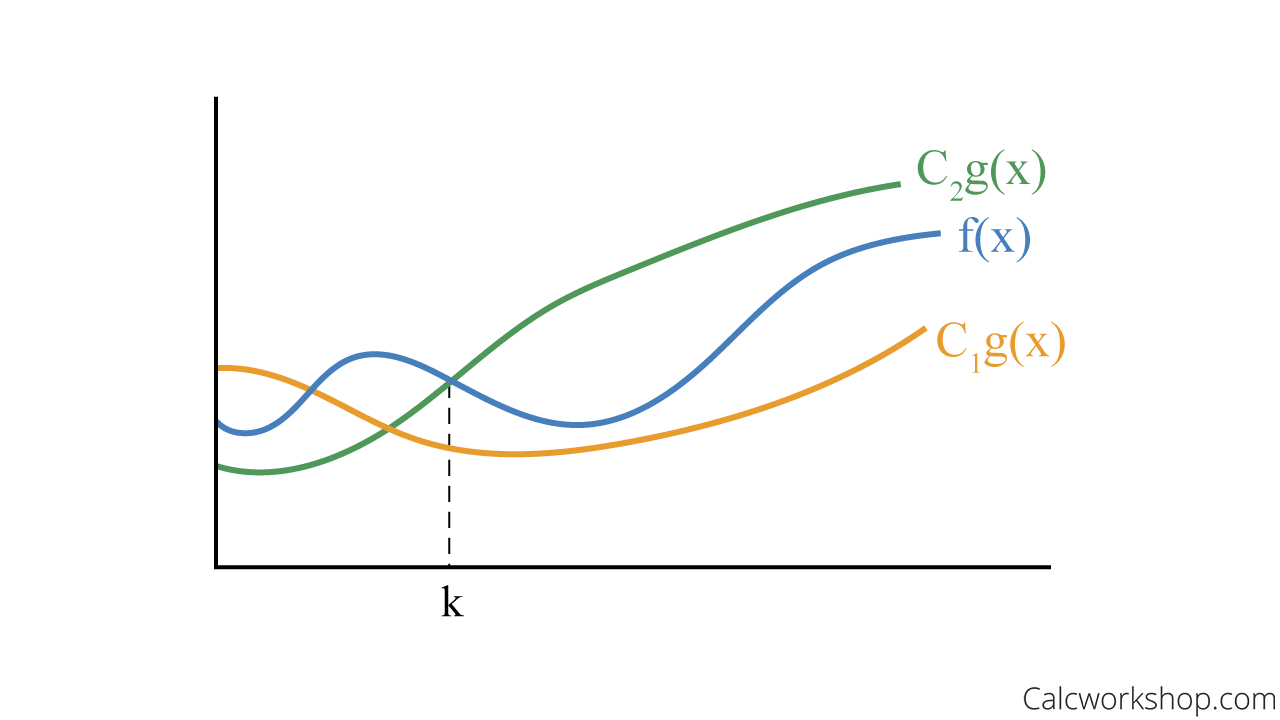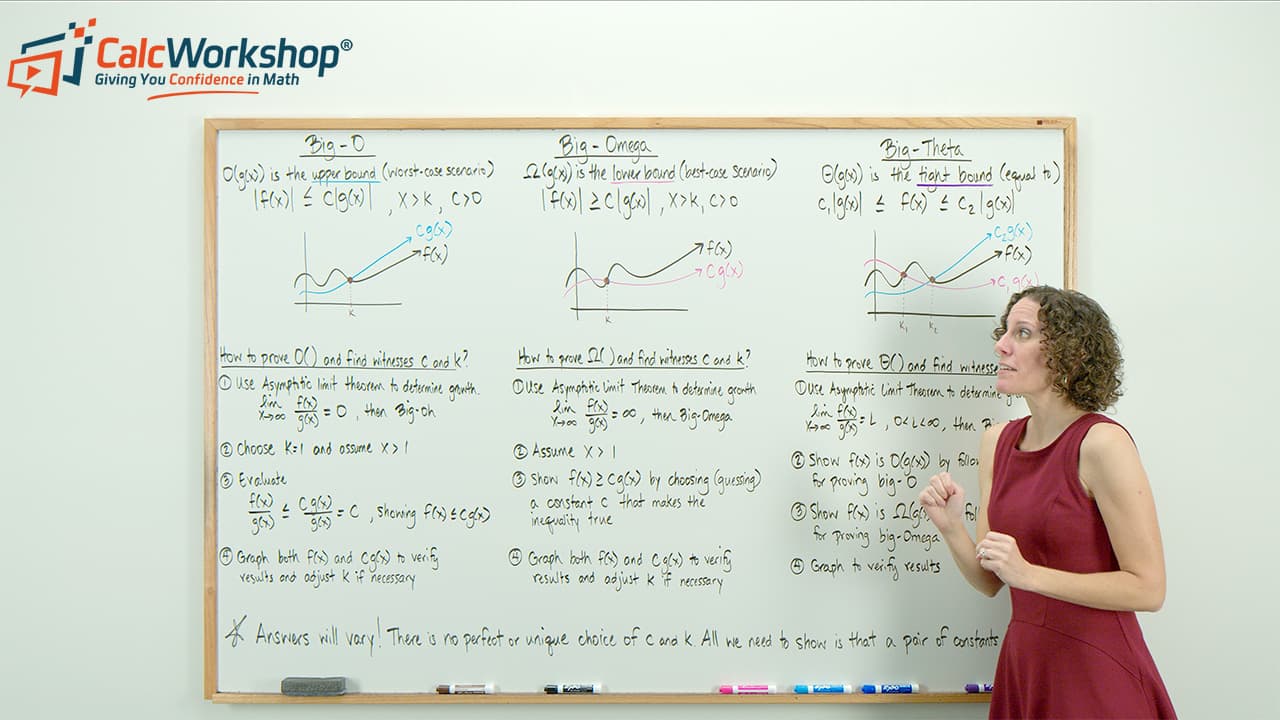It’s always better to be prepared than to be caught unawares.

Jenn, Founder Calcworkshop®, 15+ Years Experience (Licensed & Certified Teacher)
And that preparation is critical regarding how much time and space are needed to run a program.
So, how do we ensure an algorithm runs efficiently and reliably?
By applying asymptotic analysis such as:
- Big-O
- Big-Omega
- Big-Theta
These notations are the best way to estimate a function’s growth for large input values.
Let’s take a closer look at each estimation.
Big-O (Big-Oh) Notation
Big O is the upper bound for the growth of a function and predicts the worst-case scenario.
Definition: If
and are functions from the set of integers or real numbers to the set of real numbers. We say is big-O of g(x), denoted is O(g(x)), if asymptotically dominates and if there are witnesses and , which are positive constants, such that:

Big Oh – Upper Bound Graph
What is important to note is that
Big-
Big-
Definition: If
and are functions from the set of integers or real numbers to the set of real numbers. We say is big-Omega of g(x), denoted is , if there are witness and , which are positive constants, such that:

Big Omega – Lower Bound Graph
So,
Big-
Big-
Definition: If
and are functions from the set of integers or real numbers to the set of real numbers. We say is big-Theta of g(x), denoted is , if is O(g(x)) and is . Such that:
when
for positive constants , , and .

Big Theta – Tight Bound Graph
In our previous lesson, we learned how to successfully identify whether a function is big-O (upper bound), big-omega (lower bound), or big-theta (tight bound) using the Asymptotic Limit Theorem.
Now, it’s up to us to sagely choose our witnesses, or positive constants
How To Prove
- Use the Asymptotic limit Theorem to determine the growth of a function for large input values:
- If
- Choose
- Let
- Adjust
- If
- Assume
- Show
- Adjust
- If
- Show
- Show
- Note that the constants
Key Insight
And after teaching this material for years, there is something vital you must keep in mind…
…there is no perfect or unique choice of
Depending on our choices, we can increase
Example
Let’s look at a practice problem to better understand what is happening.
Question: Suppose we are asked to determine whether
is and find appropriate witnesses and . Answer:
Step 1:
First, we use our Asymptotic Limit Theorem to determine which growth of a function we are dealing with:
And since
this means that our function, is Big-Theta of x. So, now that we know
is big Theta of we now need to show that is both Big-O of and Big-Omega of by finding respective constants and . Step 2:
Let’s start with Big-O.
We can find our witnesses in several ways, and each is perfectly acceptable.
Option 1:
One option is to replace every term of
with , as seen below
Therefore,
when and . And this can be shown to be valid, as the graph of
is entirely bounded above by the graph of , when . Option 2:
But a second option is to replace any constant terms with an additional
term, as seen here:
Therefore,
when and . Notice that in doing so, we merely started our “breakpoint” for to begin at the constant term. And, once again, this can be shown to be valid, as the graph of
is entirely bounded above by the graph of , when . We can find suitable constants in many ways, but the most important is finding a pair of witnesses that satisfy the definition.
Step 3:
Now, we must focus on proving Big Omega for our function.
Here, we start by assuming
and then choosing (guessing) a suitable constant, .
Therefore,
when and . If we were to graph
and we would easily notice that is entirely bounded below by , thus showing our constants to be suitable. But once again, many possible answers could also suffice, but the point is that we need to find one pair that satisfies the definition, which we did.
Summary
Don’t worry. All will become clear after watching the video, as we will work through countless examples together and learn how to find suitable constants that prove big-O, big-Omega, and big-Theta.
Let’s jump right in.
Video Tutorial w/ Full Lesson & Detailed Examples

Get access to all the courses and over 450 HD videos with your subscription
Monthly and Yearly Plans Available
Still wondering if CalcWorkshop is right for you?
Take a Tour and find out how a membership can take the struggle out of learning math.